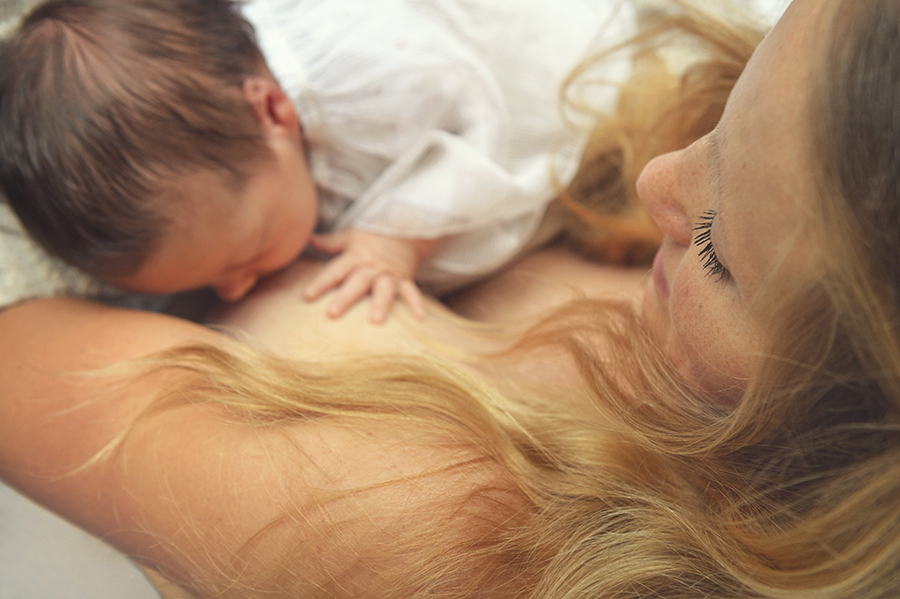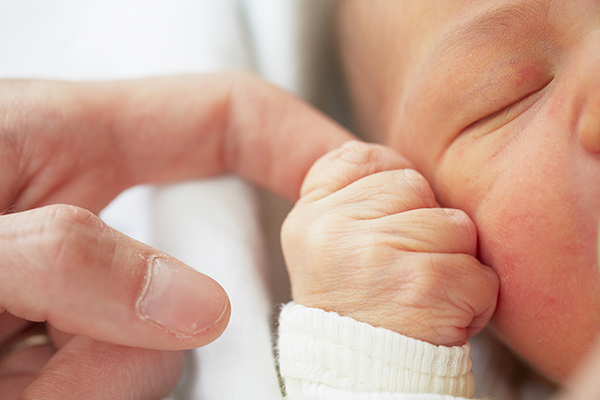
The breast crawl may sound like a carnal version of a bar crawl but the breast crawl, otherwise known as the "Mother-Baby dance", is a term for a mesmerizing first-time breastfeeding experience.
Most healthy newborns, if placed directly on their mother's chest after birth, can instinctively move towards the breast and latch on to the nipple on their own. This method of breastfeeding initiation should happen within the first hour or so after birth, ideally as soon as the baby is delivered. After delivery, the baby should be placed directly on the mother's bare tummy and dried off while the newborn absorbs mom's body heat. One special trick to enable breast crawling is not to dry off the baby's hands. This is where the magic happens! The baby finds the mother's breast through sense of smell. The amniotic fluid on the baby's hands will help identify the mother's nipple, which has a similar scent. For this same reason, the mother should not wash her nipples until the baby breastfeeds for the first time.
"But if you just put them there, they'll work their way up. They'll get the best latch that way. They'll figure out the food they're meant for and it's just an amazing moment for mom and baby when that happens naturally," says Pediatrician Dr. Alan Greene.

Global Health Media Project advocates for interfering as little as possible with the baby through the breast crawling process, in order to avoid confusing the baby's natural instinct. Skin-to-skin contact is also at play with breast crawling and the benefits of having baby on mother's stomach immediately after birth are huge for both baby and mom, including facilitating bonding, causing oxytocin release in the mother, and promotes long-term breastfeeding success.
Why hasn't this simple technique for breastfeeding caught on in the United States?
"Many women in the United States end up not breastfeeding due to the misinformation that they're given at the time of the birth. The birthing tradition is to separate the baby and the mother at birth, put the baby in a nursery and to feed formula. This was established in the 1950's when we loss breastfeeding en masse in this country in one generation," explains breastfeeding specialist and board-certified lactation consulatant, Cynthia Epps.
"There's a whole sequence of instinctual steps that the human infant brings to this moment that establishes the first latch," says Epps, "So it isn't a question of the mother succeeding at the how-tos of breastfeeding; it's more a question of the culture shifting the paradigm to favor the new mother and the new baby being undisturbed and unrushed right after delivery so the new baby can establish the future success of the breastfeeding."
Of course, no birth goes exactly as planned and some moms who may want to try breast crawling will be unable to because of the health of the baby or themselves. However, if you have a desire to try breast crawling, bring it up with your birth professionals and incorporate it into your birth plan.

More resources for breastfeeding:
Why so many women struggle with breastfeeding - Certified Lactation Consultant, Corky Harvey
How to know if you're producing enough breastmilk - Pediatrician, Dr. Jay Gordon
Tips for deciding how long to breastfeed - Lactation Specialist, Wendy Haldeman



























